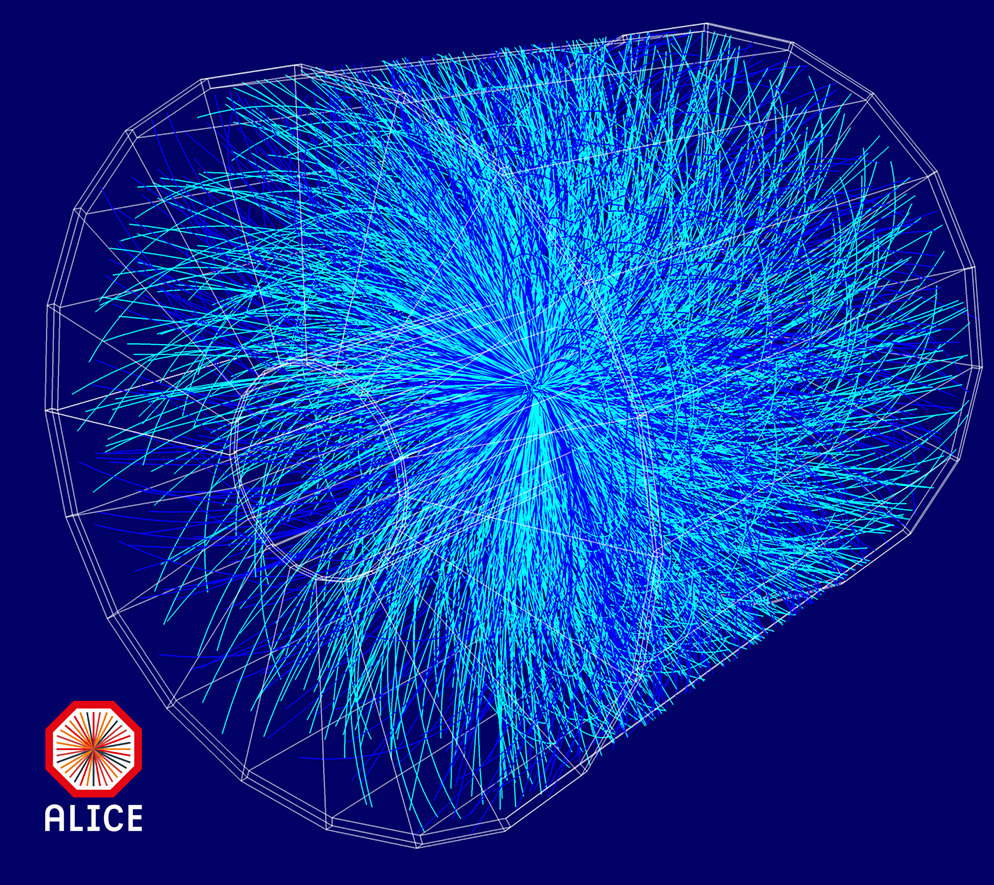Audrey Francisco-Bosson, particle tracker
Audrey Francisco-Bosson has just won a L’Oréal-UNESCO For Women in Science Scholarship. This well-deserved award is in recognition of the young researcher’s PhD work in fundamental physics, carried out at the Subatech laboratory at IMT Atlantique. By exploring the furthest depths of matter through the eyes of the ALICE detector of the Large Hadron Collider (LHC) at CERN, Audrey Francisco-Bosson tracks particles in order to better understand the mysterious quark-gluon plasma.
How can matter be reproduced to represent its state at the origin of the universe?
Audrey Francisco-Bosson: At our level, all matter is made up of atoms, the nuclei of which are composed of protons and neutrons. Inside these protons and neutrons, there are quarks bound together by gluons responsible for what we call “strong interaction.” The Large Hadron Collider (LHC) at CERN allows us to break atoms apart in order to study this strong interaction. When heavy nuclei collide with one another, the energy released is enough to release these quarks. What we end up with is a state of matter in which the quarks and the gluons are no longer bound together: the quark-gluon plasma. This state corresponds to that of the universe a few micro-seconds after the Big Bang: the temperature is 100,000 times higher than that of the sun’s core
What do you look at in the plasma?
AFB: The plasma itself has a very short lifetime: over a billion times shorter than a nanosecond. We cannot observe it. We can, however, observe the particles that are produced in this plasma. When they cool down, the quarks and gluons which were released in the plasma join together to form new particles. We measure their energy, momentum, charge and mass in order to identify and characterize them. All of these aspects provide us with information about the plasma. Since there are lots of different particles, it’s important to specialize a bit. For my PhD thesis I concentrated on the J/ψ particle.

Audrey Francisco-Bosson, winner of a 2018 L’Oréal-Unesco For Women in Science Scholarship. Photo: Fondation L’Oréal/Carl Diner.
What is special about the J/ψ particle?
AFB: Researchers have been interested in it for a long time since it has been identified as a good probe for measuring the temperature of the plasma. It is composed of a pair of quarks, which break apart above a certain temperature. Researchers had historically suspected that by looking at whether or not the pair had split apart, it would be possible to derive the temperature of the quark-gluon plasma. In practice, it turned out to be a bit more complicated than that. But the J/ψ particle is still used as a probe for the plasma. For my purposes I used it to deduce information, but about its viscosity rather than temperature.
How do you use J/ψ to deduce the viscosity of the quark-gluon plasma?
AFB: It’s important to understand that there are huge pressure variations in the environment we’re observing. The particles do not all have the same characteristics, and importantly, they aren’t all the same weight. They are thus divided up according to the pressure difference. Since the J/ψ is quite heavy, observing how it moves allows us to observe the flow of the plasma. As in a river, objects won’t travel at the same speed depending on their weight. By combining these observations of J/ψ particles with those of other particles, we deduce the viscosity properties of the plasma. That’s how it was proved that the quark-gluon plasma doesn’t behave like a gas— as we had thought — but like an inviscid fluid.
Does your scientific community still have any big questions about the quark-gluon plasma that the J/ψ particle could help answer?
AFB: One of the big questions is finding out at what moment this fluid characteristic is reached. That means that we can use the laws of fluid mechanics, and those of hydrodynamics in particular, to describe it. More generally, all this research makes it possible to test the properties and laws of quantum chromodynamics. This theory describes the strong interaction that binds the quarks. By testing this theory, we can assess whether the model used to describe matter is correct.
You are going to start working at Yale University in the USA in the coming weeks. What kind of research will you be carrying out there?
AFB: I’ll be working on the results of the STAR detector, which is located at the heart of the RHIC collider. It’s similar to the LHC ALICE detector but with different collision energies. The two detectors are complementary, so they allow us to compare different results in order to study variations between one energy and another and deduce new information about the plasma. For my part, the idea will also be to analyze collision data, like I did with ALICE. I’ll also work on developing new sensors. It’s an important task for me since I studied physical engineering before beginning my PhD thesis. I like to really understand how a detector works before using it. That’s also why I worked on a new sensor for ALICE during my PhD thesis which will be installed on the detector in 2021.
Also read on I’MTech





Leave a Reply
Want to join the discussion?Feel free to contribute!